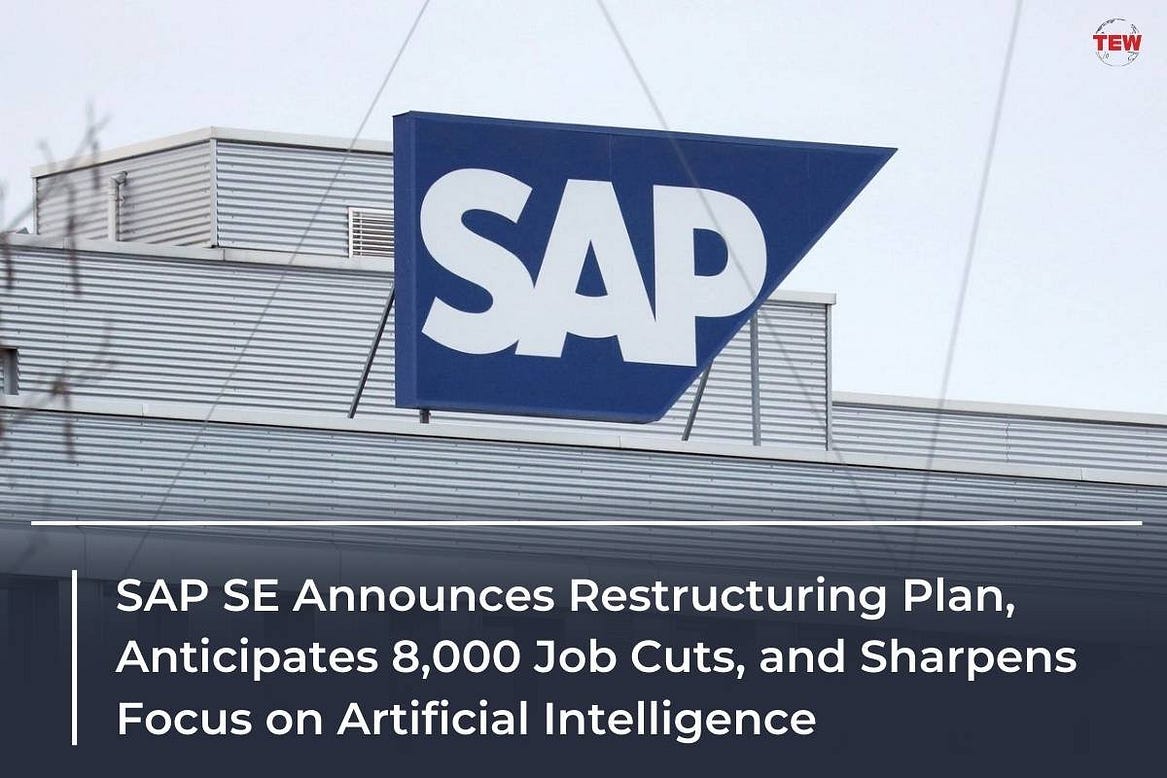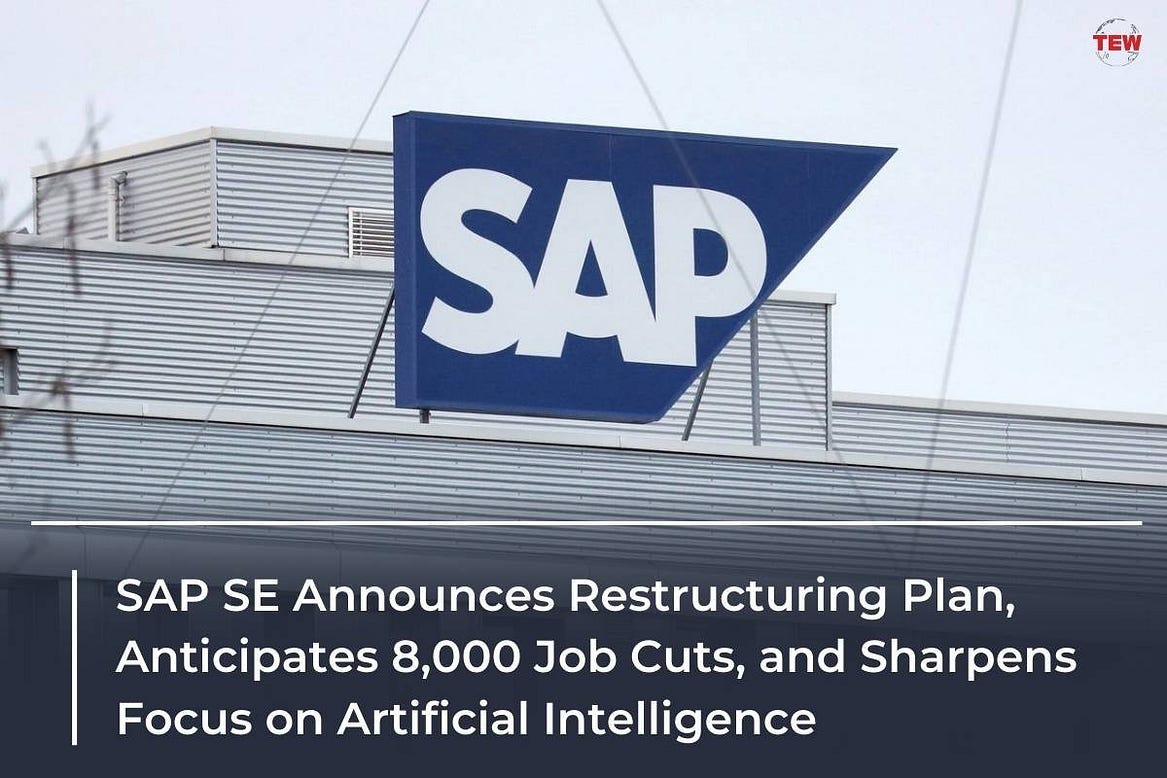TheHealthTransformation.Foundation
CloudInstitute, AIInstitute, & DigitalTransformationInstitute
Joaquim Cardoso MSc
January 29,2024
Central Message:
SAP’s significant restructuring push stems from its imperative to adapt to the dominance of cloud computing in the enterprise software landscape.
This strategic transformation aims to prioritize AI integration, foster cloud migration, and streamline operations to meet evolving market demands and customer expectations.
Executive Summary:
SAP, a leading enterprise software company, has announced a sweeping restructuring initiative aimed at fortifying its position in the digital age.
With a focus on advancing AI capabilities and accelerating cloud adoption, SAP plans to invest billions of dollars into this transformation project, impacting both its workforce and customer base.
The company recognizes the imperative of embracing cloud technology as a key driver of growth, despite historical roots in legacy, on-premises software solutions.
Shifting to cloud has clear end-user advantages. “It opens up this idea of continuous innovation, never having to worry about an upgrade, often having the best, most current capabilities in privacy and security and everything else,” Herbert says.
However, the shift to cloud-based models presents challenges, particularly in convincing existing customers to migrate to modernized ERP solutions like S/4HANA.
Moreover, the transition to Software-as-a-Service (SaaS) entails significant operational adjustments and costs, including reskilling employees and restructuring workflows.
Despite these hurdles, SAP’s commitment to modernization signals its dedication to remaining competitive and relevant in an increasingly digital marketplace.
Examples and Statistics:
- SAP’s restructuring plan involves allocating $1.09 billion to AI development and an additional $2.18 billion for broader restructuring efforts, emphasizing the company’s commitment to advancing technology and optimizing operations.
- Only one-third of SAP ERP Central Component (ECC) customers have initiated migration to the cloud-based S/4HANA solution, highlighting the challenge of convincing existing clients to embrace cloud-based ERP solutions.
- The company’s shift to a SaaS model has implications for both operational workflows and customer relationships, with potential layoffs and changes in procurement dynamics.
- SAP’s public prioritization of cloud migration initiatives aims to reassure investors and demonstrate its dedication to navigating the evolving technological landscape.
Expected results
The intended results of SAP’s restructuring push and emphasis on cloud adoption include:
Increased Focus on AI: By investing in AI development, SAP aims to enhance its software offerings with advanced capabilities, driving innovation and competitive differentiation.
Accelerated Cloud Adoption: SAP seeks to encourage more customers to transition from legacy on-premises systems to cloud-based solutions like S/4HANA. This shift is intended to unlock benefits such as continuous innovation, enhanced security, and greater flexibility.
Revenue Growth: By expanding its cloud-based offerings and attracting more customers to subscription-based models, SAP aims to drive new revenue streams and maintain its position as a leader in the enterprise software market.
Operational Optimization: The restructuring efforts are intended to streamline operations, optimize workflows, and adapt the workforce to better align with the company’s cloud-first strategy. This includes reskilling employees and reallocating resources to support cloud initiatives.
Market Reassurance: By publicly signaling its commitment to modernization and cloud migration, SAP aims to reassure investors, customers, and stakeholders of its long-term viability and relevance in the evolving digital landscape.
Overall, the results are expected to position SAP for sustained growth, enhance customer satisfaction, and ensure competitiveness in an increasingly cloud-centric market.
Overall, the results are expected to position SAP for sustained growth, enhance customer satisfaction, and ensure competitiveness in an increasingly cloud-centric market.

Conclusions and Recommendations:
SAP’s restructuring push underscores the critical importance of embracing cloud technology and advancing AI capabilities in the enterprise software industry.
To effectively navigate this transition, SAP should prioritize proactive communication and support for customers, ensuring a smooth migration process and addressing concerns about costs and disruptions.
Additionally, the company should invest in employee training and development to facilitate the transition to cloud-based operations and minimize the impact of workforce restructuring.
By demonstrating a clear commitment to innovation and modernization, SAP can position itself for sustained success in an increasingly competitive market environment.
Source
“What’s behind SAP’s massive restructuring push?”, Published Jan. 26, 2024, witten by Matt Ashare
SAP Historic from CIO Dive
Accelerating the SaaS shift
SAP isn’t new to cloud.
The company launched its first cloud-based SaaS solution SAP Business ByDesign, in 2007, Christian Hestermann, senior director analyst at Gartner, told CIO Dive.
The shift accelerated three years ago when Christian Klein became CEO of SAP and pushed for cloud-focused transformation.
Earlier this month, the company created a board-level cloud migration unit under the direction of former CIO and product engineer Thomas Saueressig.
“It’s been an ongoing transformation,” Hestermann said. “Most of the line-of-business solution acquisitions the company has made over the past few years — SuccessFactors for human resources and Ariba for purchasing and supplier network management — have been cloud-based from the beginning.”
But buy-in from SAP’s existing customers base has been a challenge.
Gartner found that only one-third of SAP ERP Central Component, or ECC, customers had initiated their transition to the cloud-based S/4HANA, the company’s newest ERP solution. The analyst firm noted in a midyear report that there was “little evidence that migrations to SAP S/4HANA are taking place at the rate needed to meet SAP’s target to terminate mainstream maintenance support for ECC in 2027.”
“
We believe that the vast majority of S/4HANA customers today are using the private cloud version, not the public cloud version,” Hestermann said.











